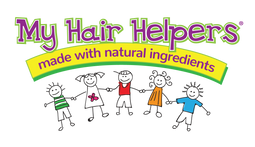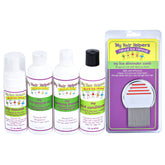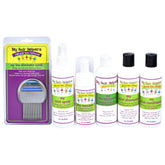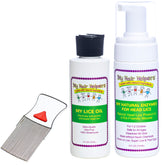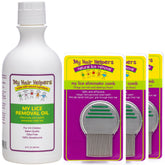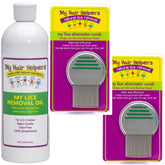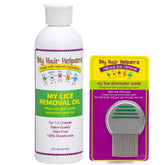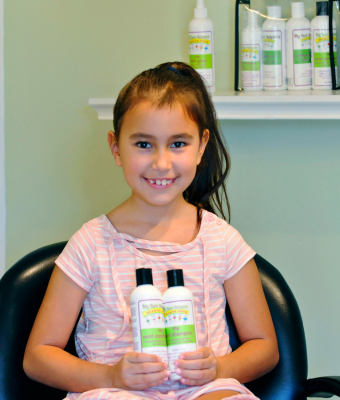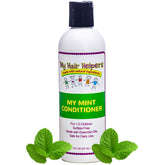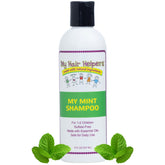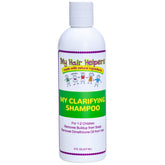CAN TODDLERS GET HEAD LICE?
As a parent or caregiver, the health and well-being of your child is always a top priority. One common concern that often arises is the possibility of head lice infestations. Head lice are tiny, wingless insects that live on the human scalp and feed on blood. They can cause itching and discomfort, and while they are not dangerous, they can be quite a nuisance. But can toddlers get head lice? The short answer is yes.
Here’s what you need to know about head lice in toddlers, how to identify an infestation and what steps to take if your child has lice.
Understanding Head Lice
What Are Head Lice?
Head lice (Pediculus humanus capitis) are parasitic insects that live on the scalp and hair of humans. They are small, about the size of a sesame seed, and are usually grayish-white in color. Lice eggs, known as nits, are even smaller and can be mistaken for dandruff or hair product residue. Nits are firmly attached to the hair shafts near the scalp and are difficult to remove. That’s how you can tell the difference.
How Do Lice Spread?
Lice spread primarily through direct head-to-head contact. This means that children, who often play closely together, are particularly susceptible. Lice can also spread through sharing personal items such as hats, hairbrushes and bedding, although this is less common. It’s important to note that lice cannot jump or fly; they crawl from one head to another. Since toddlers have little concept of personal space, they are especially at risk for head lice.
Symptoms of Head Lice in Toddlers
Toddlers can get head lice just like older children and adults. Identifying an infestation early can help you manage it more effectively. Common symptoms of head lice include:
- Itching: The most common sign of lice is itching, caused by an allergic reaction to louse bites.
- Visible Lice: You might see live lice moving on the scalp or hair.
- Nits: Look for nits attached to hair shafts, especially around the nape of the neck and behind the ears.
- Irritability: Toddlers with lice might be more irritable than usual due to discomfort.
How to Check for Head Lice
Regularly checking your child’s hair can help catch lice early. Here are the steps to follow:
- Part the Hair: Use a fine-toothed comb to part your child’s hair and examine the scalp under bright light.
- Look for Nits and Lice: Carefully look for nits and live lice. Nits are tiny, oval and usually yellow or white. Live lice are small and move quickly.
- Use a Lice Comb: A special lice comb can help remove lice and nits. Comb through small sections of wet, conditioned hair for best results.
Best Course of Action
If you find that your toddler has head lice, there are several interventions you can try. While over-the-counter products may appear to be convenient, they do contain insecticides that can be harmful to young children, especially toddlers. Natural remedies might be safer, but they can be messy and often aren’t effective enough to impede the lice life cycle.Your best option is to choose head lice products made from natural ingredients like peppermint and rosemary. My Hair Helpers has a full line of products that not only manage head lice infestations but also keep you lice free. Here’s how they work:
Use our Lice Oil to trap and slow down lice bugs, then use our Mint Conditioner to smooth and soften the hair. Comb through the hair with a detangler comb and add a layer of our Mousse Enzymes to loosen nit glue. It’s important to get the nits so that they don’t start a new life cycle!
When these steps are complete, you’ll want to comb through your toddler’s hair using our lice comb. Your toddler will go to sleep with the oil in their hair, and when they wake up, you can wash it out using our mint shampoo.
Going forward, you'll want to take a peek each week and continue using the mint shampoo, conditioner and head lice spray to keep your toddler lice free. Easy peasy—and you don’t have to worry about exposing your child to harmful chemicals or insecticides. Be sure to check other children in the home as well, as lice can spread easily. If you do notice lice or nits in another child’s hair, follow the same process for them.
Conclusion
Yes, toddlers can get head lice. While dealing with head lice can be frustrating, understanding how to identify and manage an infestation can make the process more manageable. If you have questions about addressing a lice infestation in a young child, contact My Hair Helpers. We also have easy step-by-step directions on our website, along with fast shipping and family friendly pricing on all products!
